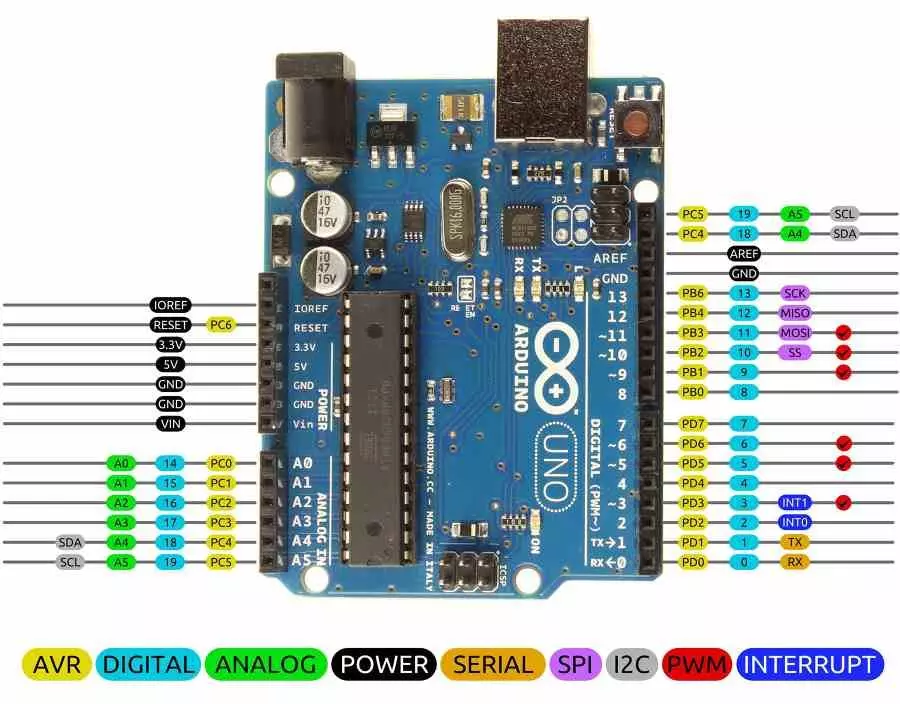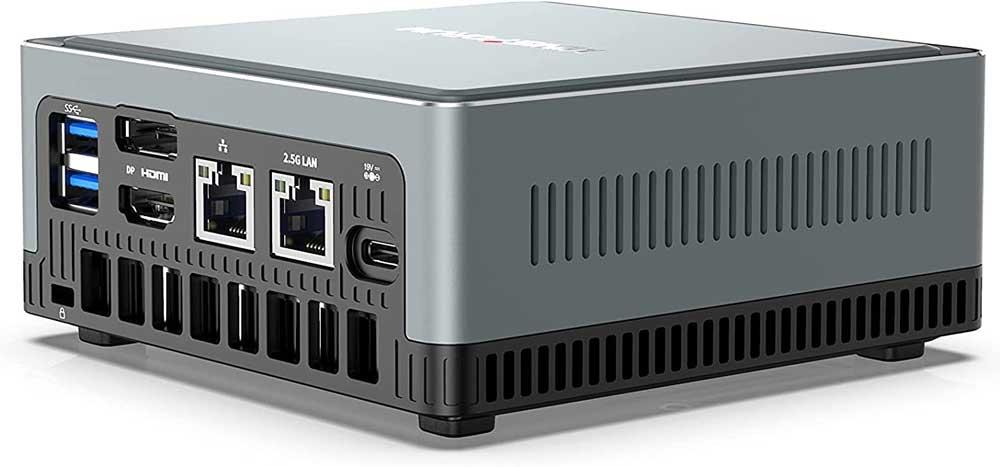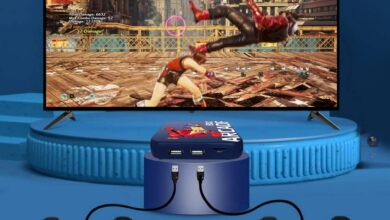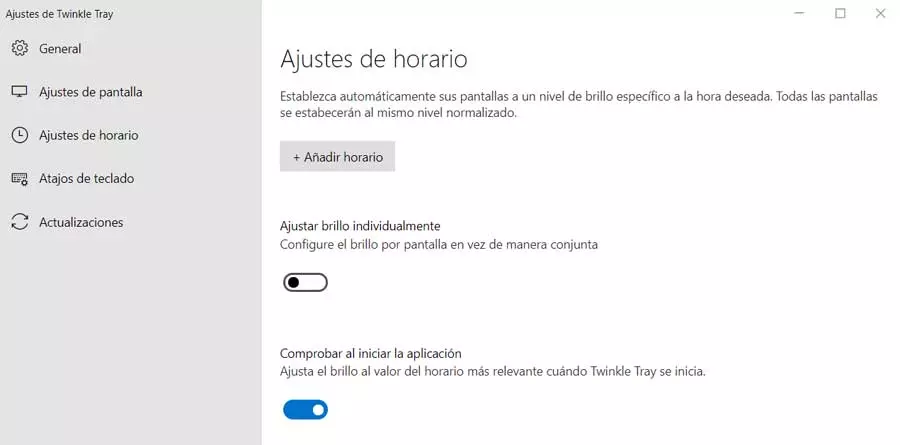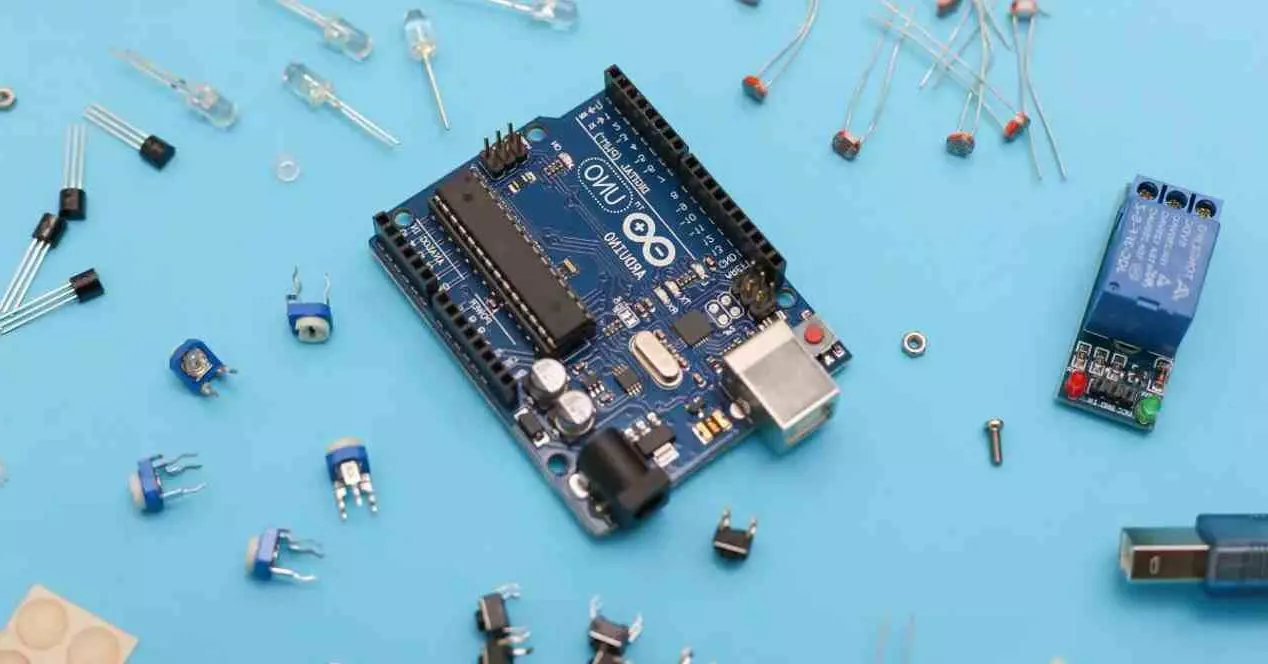
The concept of what we know as Arduino was developed by the team of the same name in Ivrea, Italy. With the goal of creating a series of microcontrollers that were easy to use. The concept has been very successful and we owe it to Massimo Banzi, David Cuartilles, Tom Igoe, Gianluca Martino, and David Mellis. Let’s see, therefore, what are the characteristics of an Arduino board and what differentiates it from other similar but different devices, such as the Raspberry Pi.
What is Arduino concretely?
Arduino is not really a concrete hardware, but a conceptwhich take the same guidelines as open source applicationsbut applied in the world of electronics. This means that the people who carry out the projects with these boards, what they do is share the plans and the code with which their main microcontroller has been programmed. Which allows others to do the same project, create variants and even improve it.
In recent years, it has become a key element in making electronics more accessible at an educational level and has broken down barriers to accessibility. This has allowed the development of small-scale solutions. Whether in the form of educational projects or even as solutions to specific problems in small businesses. However, for the ordinary public there is much confusion about its nature.
It is based on a microcontroller
Specifically in those of the ATMega family. This is important to understand its difference from the Raspberry Pi. While a conventional processor today is complex enough to be able to run several processes at the same time in parallel, a microcontroller can only handle one at a time. Therefore, their usefulness is different and it is normal to see them working in various household appliances. The chip that controls the programs of your washing machine or dishwasher? The safest thing is that it is a microcontroller that carries out this task.
After all, for prototyping and simple electronics projects, the power of a complex processor is not necessary. More than anything due to the fact that not even 5% of its capacity would be used, it is a waste of energy and is much more expensive.
Interfaces and components in Arduino apart from the microcontroller
The strong point of microcontrollers is in the fact that manage various electrical components that are connected to the same through an ordered program. However, it is not valid only with the microcontroller. So that It is necessary to communicate with the outside. Either to dump a new program or to interact with the different devices and peripherals in the different projects0 with the Arduino boards. Knowing the different interfaces and components that we can find on an Arduino board is key to understanding the nature of these small boards.
counters
Although these are not directly an interface. A counter is nothing more than a memory whose stored value is increased or decreased by 1 for each pulse. Where the clock speed can be its own or be carried out in the unit itself or be external.
The purpose of a counter is to save the microcontroller CPU from having to count its own pulses. Although we can also create a real time clock to equip it to the standard time that we use in conventional clocks. Although the latter is usually rare in a microcontroller.
When programming this type of device, knowing how long each instruction lasts in terms of clock cycles and having everything well synchronized is something that must be taken into account and is key to the proper functioning of this type of device.
Interrupt Manager
An interrupt is when an external peripheral sends a signal that stops the execution of a program to solve its request. In a microcontroller by its nature this is difficult to do on a processor that can only handle one process at a time. That is why, in order to manage these requests, the Arduino boards contain a piece with the ability to manage interruptions in parallel with the microcontroller.
Pulse Width Modulation (PWM)
These acronyms will sound familiar to you from their use for the fans connected to the PC motherboard. However, they have other uses. Two that come to mind are the control of the speed of different motors to which the Arduino board is connected. To understand its operation we have to start from the basis that we have a digital signal that generates a constant pulse and then an analog modulation signal. Which will vary the time the signal is high or low.
serial communications
A serial communication transmits a single bit per clock signal in one or two directions at the same time. So they are used to communicate data between two components. These can have one of three different configurations.
- A transmitter and a receiver, each with its corresponding cable and pin through which to pass the data. Which allows them to work in parallel.
- A system of transmitter and receiver that share a single cable, so they cannot make copies of data in a single cycle.
- A transceiver, which is a device that can transmit and receive at the same time. The problem is that a transceiver cannot send or receive from itself.
Some interfaces are asynchronous, so they don’t share the same pulse and can only send or receive data when their signals match. Instead, others share the same clock signal and can transfer information much faster. As a final detail, we will drop that some Arduino boards use LED lights to indicate that data is being transmitted.
Analog to digital signal converter
Many of the mechanisms that connect to a microcontroller do not send a digital signal. Therefore, it is necessary to digitize the signal so that the microcontroller can operate with the data it receives from said peripherals. So in Arduino we have a series of connections for analog signal devices and an ADC between these and the microcontroller.
What makes Arduino different from Raspberry Pi?
There is a big difference between Arduino and Raspberry Pi boards, which you can see in the following table:
| Characteristic | Arduino | raspberry pi |
|---|---|---|
| Based on: | ATMega 8-bit microcontroller. | 64-bit ARM microprocessor. |
| Clock speed: | Few tens of MHz | Above GHz |
| RAM | Internal, few KB | External, UK. |
| Storage | Internal, few KB | External, UK. |
| Primary use | Control electrical components connected to a board. | computer on a board |
| Operating system | Nope | Several adapted Linux distributions. |
It must be understood that the chip of a Raspberry Pi is no different from those used in mobile phones. So it has the ability to run a complex and current operating system. This makes the Arduino used for other functions and therefore you will see it managing external hardware and devices relatively easily. We can even find peripherals that are used in a computer such as an external hard drive or a printer that use hardware that is more complex than that of an Arduino board. This is because they need a lot more power to work.

